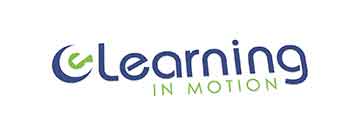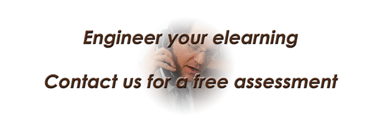There is no doubt that eLearning has some areas of opportunity, and in some cases, these seem like unsurmountable obstacles. But in many cases, the limitations do not have anything to do with lack of technological advancements or resources. It is just that our brains have limitations, the subject matter does not allow for an eLearning modality (think those practice scenarios where kinesthetic abilities are required), or the fact that fairness is a quality that many of our societies lack.
In light of all this, I decided to post these ideas I consider challenges for eLearning that do not seem to have a practical solution in the near future. This does not mean that we will just sit and give up. There are many other working on these problems, and step by step, are getting closer to solutions, although not ideal, at least contribute to the amelioration of these obstacles. Maybe we will not see a day when every subject of study will be completely online, but we will witness the integration of different valuable solutions.

The Haves and The Have Nots
This is one of those problems that many people interpret as an example of how life is unfair to many people. Developed countries and some in the third world, already offer technological solutions to the complicated problem of access to eLearning. But more than half the population in this planet does not have access to the internet. This service is essential if we are considering eLearning as a mode of education and training. If you don’t have access to the internet, you just can’t learn through eLearning, period.
But there is hope. Elon Musk’s Starlink promises to give internet access to the whole world, although the tag price is unaffordable to many citizens of this world. At least major cities of underdeveloped countries do have internet service available to those who can afford it. So there is some progress on this regard. On the other hand, the infrastructure is also lacking in many places in this world. Unfortunately, eLearning needs servers, computers, broadband internet, and software. Many of these things are just unaffordable to many. Remember MOOCs? Well, after the data was in, they found out that only learners from developed countries (or those underdeveloped countries that have limited access) were consuming these courses. The basic principle of MOOCs was to give access to high quality education to those who couldn’t afford it. It turns out, they could not afford a connection either.
Mental Health Challenges
Unfortunately, eLearning cannot help those learners that have mental health problems. These learners benefit the most when they can have human contact with their peers and experts that can help them. Mental health issues are widespread across the population, it is not a gender, age, or social status problem. It affects the whole population and these patients need help from experts that can assess in person their unique situation. I remember this show that consisted on a psychologist that saw her patients through virtual sessions, and although it was pretty funny, the reality is that it doesn’t work for may patients.
On top of that, eLearning education requires some abilities that learners need to acquire if they are to succeed in their programs. Working alone, doing research with little guidance, and performing without timely feedback is not for anybody. It is more efficient to structure courses in a hybrid mode where learners can cover materials online but apply what they learn in the classroom, interacting with others, teaming with course mates, this tends to increase performance across the group taking a hybrid course.
Not Everything Can Be Turned into eLearning Courses
This is a situation that cannot be changed no matter how we try and accommodate a class that is more effective in-person than on an eLearning setting. For example, if you are training workers on how to drive a forklift on a warehouse, a simulation in an eLearning setting can help them prepare for simple situations or learn the basic features of this equipment, but we shouldn’t expect they will walk away from an eLearning course knowing how to drive a forklift. This will only learn in a real setting, controlled for the study of different scenarios.
It tends to be the case that many subjects dealing with soft skills or very specialized training, would need a form of training or education that involves a trainer or instructor to conduct the sessions and provide the feedback that can help improve performance. In my opinion, all we can do is to provide some components of a course in an eLearning mode that can release some classroom time and occupy this for other activities that help learn the skills from assessments presented in scenarios, case studies, and so on.
Minimizing Cheating in Assessment
This has been a problem for eLearning courses for training and education. Students tend to resort to cheating in order to accrue as many points as possible, disregarding the objective of the course, which is to learn the subject. This is not a problem that can be interpreted as a lack of honesty or integrity on the learner’s part. In many cases, this is a problem created by the same people in charge of creating the training or course. If your plan is to create some reading materials and then provide a multiple-choice exam, I can guarantee that your learners will cheat, no matter how many honor pledges you make them sign.
Instead, you need to design elements in the course that show how much the learner understood, their capacity to apply what they learned to new situations presented to them. You can accomplish this by requiring a written assignment about a selected subject (with very explicit rules for submission), you can ask for a video demonstration of their performance, even better, a virtual session where the instructor can assess the learner’s skills and provide immediate feedback.
Conclusions
I don’t think we will find definite solutions to all these problems I presented in this post. My hope is that we will continue to work on finding solutions that can help ameliorate each of these problems. It will be difficult to provide access to eLearning to all people in this planet, but progress has been made. Hopefully, we will create courses in eLearning mode that can help those with mental health issues, although they will always need access to experts for more effective treatments and other help they may need. So not all subjects can be completely online in eLearning mode, but we can create hybrid courses that can increase the time for other activities that help in acquiring high-level skills, in these settings feedback is more effective and timelier. But I don’t see eLearning ever overcoming this limitation. Finally, even though technology has provided solutions (online proctoring), cheating will not be removed from eLearning courses any time soon. This situation is a combination of actions from learners and bad course design, but it is still a problem that plagues eLearning courses everywhere.
As always, find us in social media. You can share this content by using the buttons below. If you have questions and comments, use the form at the bottom of this page, or contact me directly, and I will get back to you as soon as I can. Thank you for reading this post.

